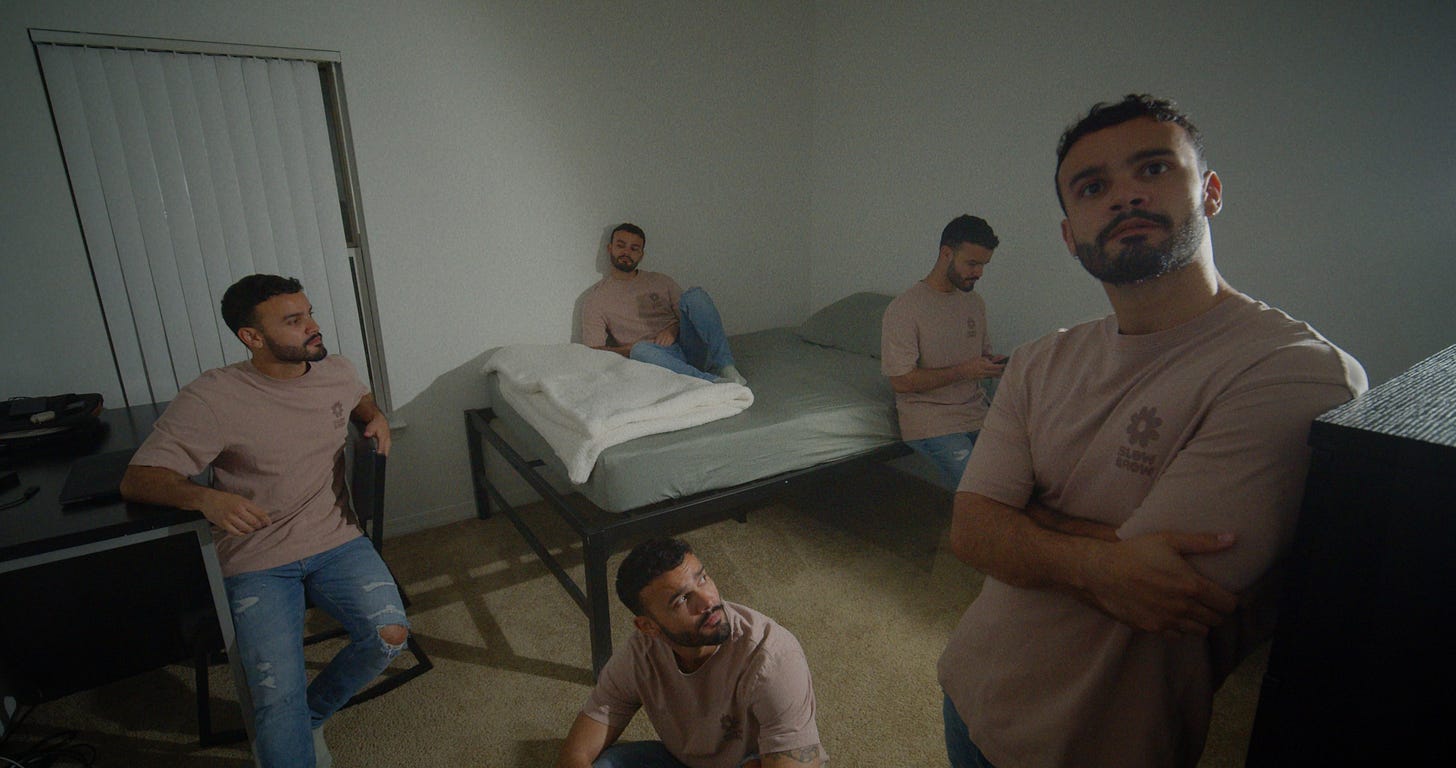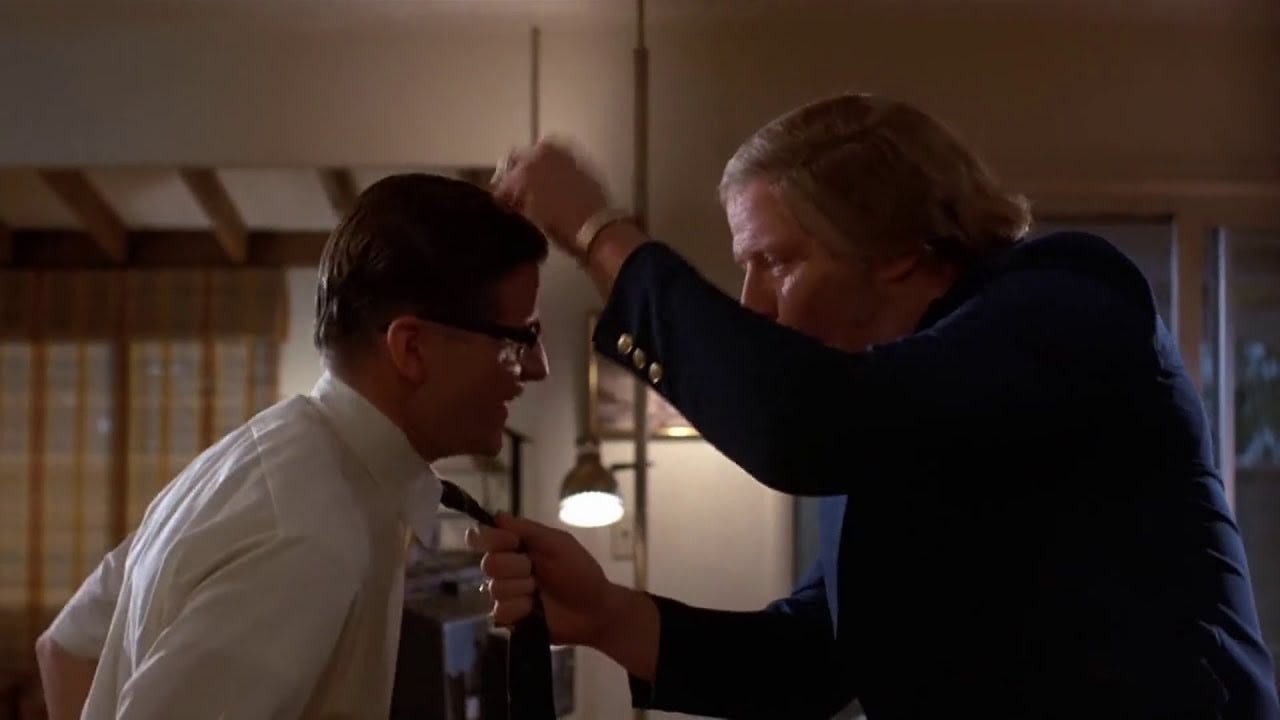I am one of those melodramatic fools
Neurotic to the bone, no doubt about it
Sometimes I give myself the creeps
Sometimes my mind plays tricks on me
It all keeps adding up
I think I'm cracking up- “Basketcase” by Green Day
Two weeks ago I bought tickets to see Green Day (and Smashing Pumpkins) next September at Coors’ Field here in Denver. Next summer marks 30 years of listening to the band that took over the airwaves when Dookie dropped like a bomb on the American music scene in February of 1994.
I remember driving around the West Denver suburbs on summer break after my freshman year of college with Basketcase blaring out the windows and three (or more) friends somehow crammed inside my dad’s old Nissan King Cab pickup truck.
It might have been one of the most honest moments of my young life.
If you are new here, welcome to Manhood Reimagined. I’m glad something caught your eye. I’d suggest you start here. I continually update this page which offers an overview of the project as a whole and how individual posts fit into a much bigger picture. If you want a bit more about me and why I write here, check this out.
What made those summer singing sessions so honest? We were recognizing (and embracing) the complexity of ourselves. A complexity Bill Plotkin explains in his map of the human psyche (which I introduced at the end of my last post).
Do You Have Multiple Personalities?
That was the question asked by an ex in the summer of 2022 when I returned home from a rewilding wilderness immersion talking about having a conversation I had with my subpersonalities.
I said no and pulled out the map, but as I tried to explain it, she just looked at me like I’d lost my mind. I should have known to break it off then, but like a fool, I waited until she proved herself to be the mad one.
So let me try again with all of you, but this time, when you ask, “Do you have multiple personalities?” I will reply, “No, I have Parts, and so do you.”
Parts Therapy
Parts Therapy is another way to talk about Internal Family Systems Therapy, a model developed by Richard Schwartz. The most accessible introduction (it was written for children) is, “We All Have Parts” (affiliate).
As a quick overview, growing up we all figure out ways to navigate the world we find ourselves in. This includes not only our immediate family but the legacy that comes with our family history. From there it extended to our community, country, and world.
When the world around us mostly goes well, we can affirmatively answer questions those questions from Erkison. The ones like:
Can I trust the world?
Is it okay to be me?
Is it okay for me to do, move, and act?
Can I make it in the world of people and things?
Who am I? Who can I be?
But more often than not, whether it is our family of origin, feeling bound by or unable to live up to your family’s legacy, cruelty from the broader world, or just living in a rubber dog shit society, we find ourselves incapable of affirmatively answering those questions.
So when we can’t answer that question we figure out other ways to make our way through the world. Common tools to help us navigate the world include fight, flight, freeze, fawn (submit), or attach. These tools tend to develop personas all their own.
Parts and Personas
In Parts Therapy, they talk about broad categories like Managers, Firefighters, and Exiles. Each has a variety of personas it can take on.
For example, Managers are proactive protectors out to make sure we will never be caught off-guard again. They can take multiple forms.
One of those forms is the Type A Executive who seems to have his “shit together.” You know one or two of these guys. He’s in control of everything and everyone around him. This guy is Mr. Right, Mr. Always Right, and there is an aura of intimidated admiration whenever he walks into the room. But you know what is going on there? All of that power and control is just a persona designed to protect a terrified little boy inside.
They can also show up as the Harsh Critic or the Burdened People-Pleaser, think Biff Tannon and George McFly of “Back to the Future” fame. One manages by knocking everyone else down while the other bows to the needs of everyone in an attempt to manage things from below.
Firefighters, like Managers, are also protectors, but they are reactive. When things get hard they often turn to compulsive behaviors like drinking, eating, and exercising.
Exiles can also take on an array of personas but often leave us in a state of shame and victimhood.
Parts Therapy as a model invites you to get to know and care for your parts so you can embrace them as part of you. But while Parts provides a nice introduction to a concept, Plotkin’s map takes things a step further.
Plotkin’s Parts Plus
Plotkin takes Parts to another level by creating Parts for our woundedness and our wholeness, and the two interplay with each other.
Our wholeness is found outside the circle and incorporates the:
Nurturing Generative Adult
Innocent, Sage, Sacred Fool, Trickster
Wild Indigenous One
Muse, Inner Beloved, Anima/Animus, Guide to Soul
The wounded parts that correlate to each facet of wholeness sit inside the circle.
From Woundedness to Wholeness
So how do we start to find ourselves in this map?
Let’s imagine you grew up not feeling the safety and freedom needed to explore the world as the Wild Indigenous One. Perhaps your father was a brute or an alcoholic. In response, you might do everything in your power to placate him. Or you could go in the opposite direction and just become angry at the world. Either response is understandable, but both are manifestations of Wounded Children.
Years later, now an adult, you find yourself still placating or angry and it is making life difficult at work and impossible at home. The very thing that got you through childhood is now shattering your world. So what do you do?
Part of the real beauty of Plotkin’s map is that what our Wounded Children need to find healing and safety so we can step into the Wild Indigenous One, is the wholeness facet of the opposite direction, the Nurturing Generative Adult.
But instead of turning to the adults who failed to be nurturing and generative when we were children, we can nurture this facet in ourselves and give ourselves today what we lacked then.
In the coming posts, I will break down each of these dynamics further. If you want to talk more about your own story and the possibility of working together, I invite you to schedule a discovery call.
For now, which fascet are you most curious about? I’ll take them on in the order of your choosing.







